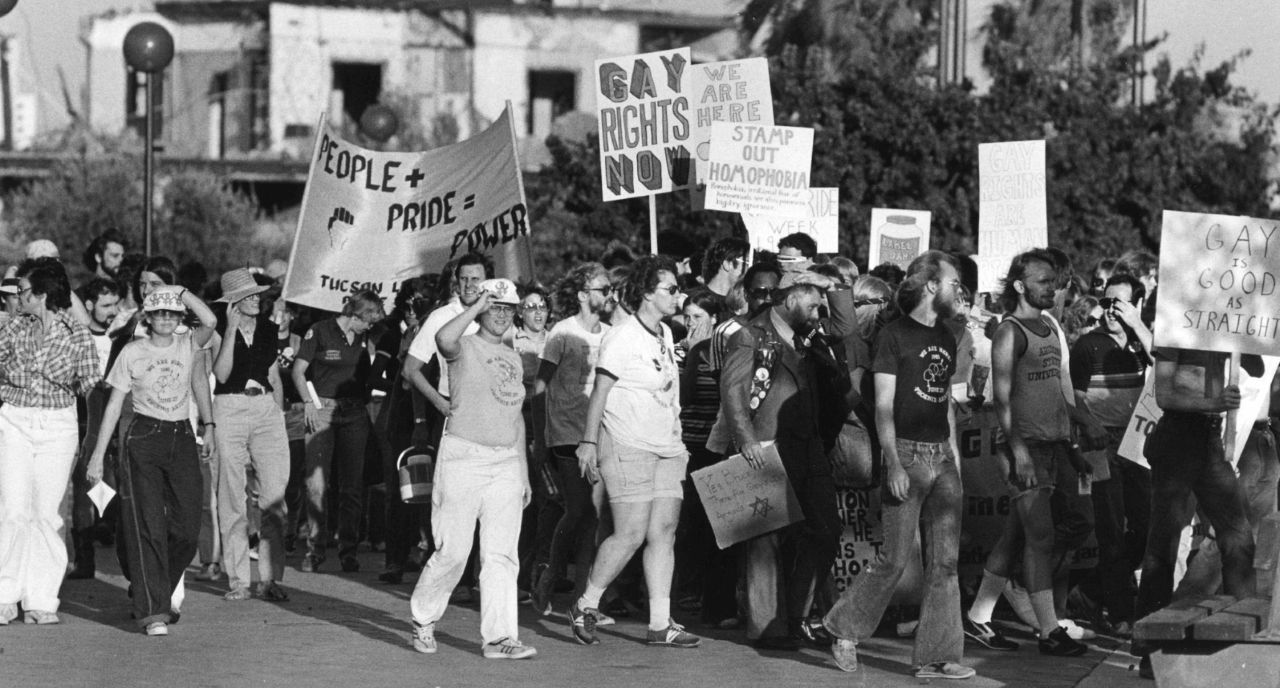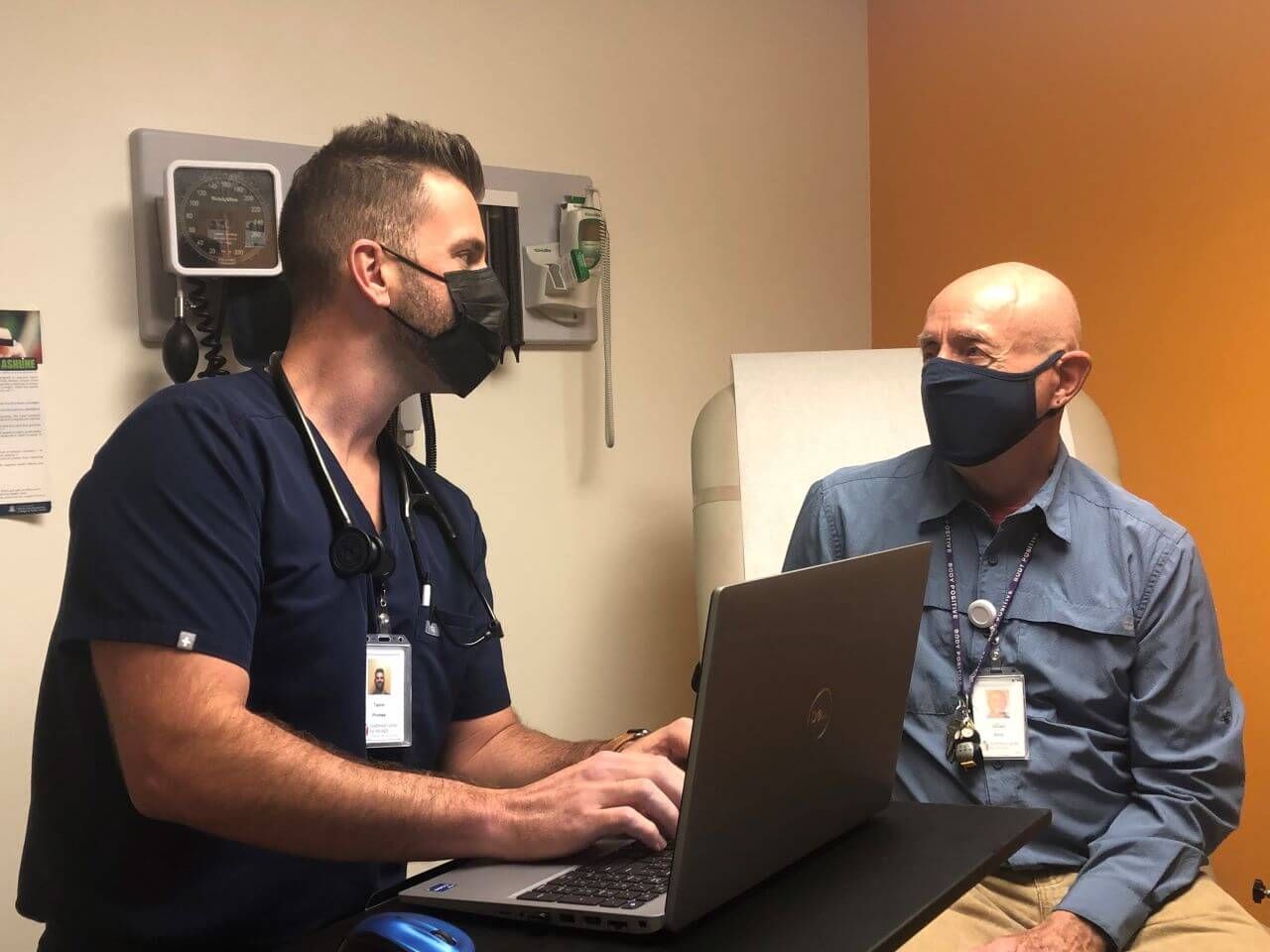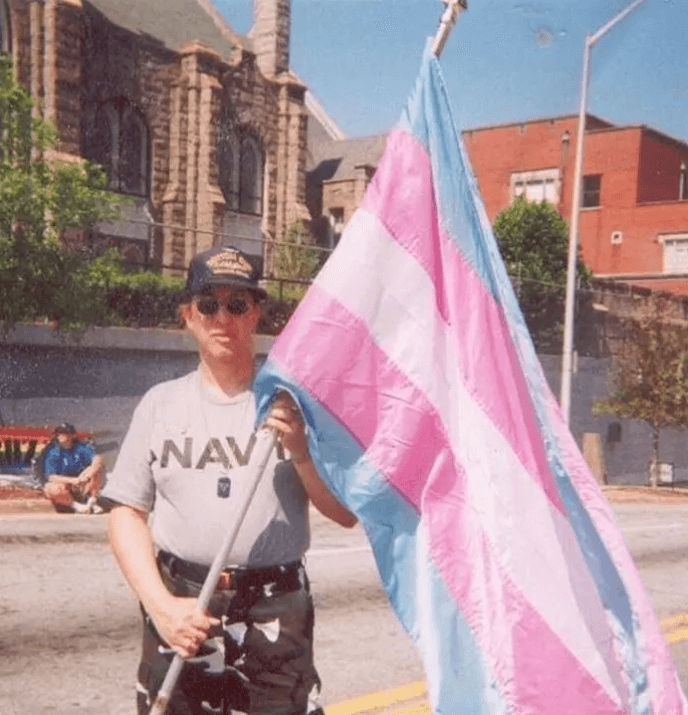Boot the House Down: The History of Phoenix Pride
**Notice to readers: This article contains language that refers to cisgender queer people at times. Please note that this is not intended to exclude specific groups within the LGBTQ+ community but to explain specific historical happenings pertaining to certain groups.
The Phoenix LGBTQ+ community has made significant progress thanks to various movements and influential individuals who have contributed to advancements in our city and beyond.
To celebrate the queer community in Phoenix that brave individuals built and younger generations live in, it’s important to pay homage to those who came before and paved the way. Not only is Pride Month a celebration of the LGBTQ+ community and its achievements, but it’s also a month filled with advocacy and the continued fight for fundamental human rights.
The First Pride Was a Riot
Early Phoenix queer history has quiet roots that one can find within the deep archives of newspapers and historical books; However, over time, and with the difficulty of sifting through relevant articles while using a microfilm viewer, it may not be obvious where queer history begins in Phoenix, or at least when queer individuals started speaking out and forcing the state to acknowledge their personhood and rights. Compared to other states and cities, Phoenix lagged heavily in recognizing and creating protections for queer individuals.
The Pride movement commenced in 1969 with the infamous Stonewall Riots in Greenwich Village, New York. The Stonewall Riots began due to the NYPD raiding known LGBTQ+ bars. The Stonewall Inn was then raided without notice on Jun. 28, and the queer patrons had had enough. Patrons began to riot against the police, protesting unjust treatment instead of staying quiet, as had been the case for years.
LGBTQ+ Pride is held in June as a tribute to the Stonewall Riots. As influential as the riots were in queer history, Phoenix did not start hosting pride-related events until 1977, as small festivals popped up around the city.

Creating a Safer Medical Care System in Phoenix
A group of gay and lesbian activists formerly known as the Gay & Lesbian Pride Planning Committee, led by Kirk Baxter and BJ Bud, marched through Downtown Phoenix for the first time in 1981. They marched from Patriots Park (Now Cityscape) to the Arizona State Capitol to bring attention to the lack of gay rights in Phoenix. This was considered the first major Phoenix Pride parade, 12 years after the Stonewall Riots.
While this prominent activism was happening, Jun. 5, 1981, was considered the beginning of the HIV/AIDS epidemic as initial reporting began to roll out nationwide. The news rapidly spread that a rare type of predominantly untreatable pneumonia was killing mainly gay and bisexual men, of which, was originally referred to as gay-related immune deficiency, or GRID.
Baxter saw the HIV/AIDS epidemic as a massive threat to the queer community. While many queer individuals were attempting to seek treatment, they were often heavily discriminated against by healthcare providers.
Baxter created the Phoenix Body Positive Clinic in 1990, now known as the Southwest Center, a haven for many in the LGBTQ+ community since healthcare for many queer individuals is still not widely accessible. “Our mission began with HIV/AIDS care, prevention, and research. As a trusted brand, Phoenix Body Positive represented that work,” said Iris Avila (she/her/hers), Director of Marketing and Community Engagement for the Southwest Center. “We expanded our services into administering quality primary care, mental health care, testing, treatment, and education, which prompted a name change that was welcoming to every Arizonan looking for a safe, affirming, and inclusive environment.”

Future Goals of Healthcare
Fast forward to World AIDS Day, Dec. 1, 2014. The International Association of Providers of AIDS Care (IAPAC) created the Fast-Track Cities network with the goal of “90-90-90-0”. Launched in Paris, “90-90-90-0″ aimed to end AIDS as a public health threat by 2030 by partnering with city leaders and councils to help fund research and treatments. “90-90-90-0″ stands for a) 90 percent of people living with HIV knowing their HIV status; b) 90 percent of people who know their HIV-positive status on antiretroviral therapy (ART); c) 90 percent of people living with HIV on ART achieving viral suppression; and d) ZERO stigma.
The Southwest Center, with its history of treating, preventing, and researching HIV/AIDS, partnered with the City of Phoenix to adopt this declaration and place it into effect.
“The Southwest Center partnered on clinical trials in Phoenix and helped bring 32 HIV treatments to market. Partnering with the City of Phoenix Fast-Track Cities initiative has allowed us to expand our reach throughout the Valley to ensure that testing, treatment, and prevention are readily available,” said Avila. “Phoenix has made considerable progress towards achieving the 90-90-90 targets and ending AIDS as a public health threat by 2030. We continue to mobilize resources to make HIV testing accessible, inform and educate those at risk about the available prevention tools, and make these tools affordable and accessible.
“We must continue supporting people living with HIV through the steps of the HIV Care Continuum to achieve viral suppression. Where gaps in services exist, we develop strategies to help people living with HIV,” Avila added.

Trans Rights Roots
In addition to being a part of the Fast-Track Cities initiative, Phoenix also has a significant legacy thanks to Ms. Monica Helms, best known as the creator of the Transgender Pride flag, who is widely regarded as the “Transgender Betsy Ross.”
Helms, a Navy submarine Veteran who has helped lobby lawmakers and advocate for trans rights, founded the Transgender American Veterans Association and created the Transgender flag for those identifying as Transgender (Trans), Intersex, or Gender non-conforming/Genderqueer.
Before she unveiled the flag at Phoenix Pride in 2000, most individuals identifying as trans/genderqueer did not have their specific flag as most queer groups did.

“The stripes at the top and bottom are light blue, the traditional color for baby boys. The stripes next to them are pink, the traditional color for baby girls. The stripe in the middle is white for those who are intersex, transitioning, or consider themselves to have a neutral or undefined gender,” Helms said, “The pattern is such that no matter how you fly it, it is always correct, signifying us finding correctness in our lives.”
This flag is now used internationally to represent the Trans community. Recently, in the new rendition of the LGBTQ+ pride flag, called the Progress Pride flag (originally known as the gay pride flag, specific to cisgender men and cisgender lesbian women, and more commonly associated with white individuals), Helms’s design of the Trans flag was added. This iteration of the flag now includes brown and black stripes to represent the Queer Black, Indigenous, people of color (BIPOC) persons.

Creating a United Front
While significant changes have been made in recognizing trans people within the LGBTQ+ community, advocating and fighting for equal rights for everyone is still in progress. This is where ONE Community enters the story. Founded in 2008, One Community is a member-based coalition comprised of businesses and individuals that advocate for LGBTQ+ rights.
“Our [ONE Community’s] goal is to live in a state and nation that celebrates, protects, and respects everyone equally – regardless of who you are or who you love”, said Angela Hughey, co-founder and president of ONE Community. To aid in this initiative, ONE Community launched the UNITY Pledge, a concerted effort by Arizona businesses, organizations, faith leaders, and individuals to advance workplace equality and equal treatment in housing and public accommodations for Lesbian, Gay, Bisexual, Transgender, and Queer (LGBTQ+) individuals and their allies.
ONE Community significantly impacted the LGBTQ+ community by calling out the SB1062 bill. SB1062 was created to amend existing law to give any individual or legal entity a route around state laws if there was a “significant burden against religion,” including Arizona law requiring public accommodation for all. Thus, ONE Community sprung to action. “Our efforts allowed us to educate about the benefits of inclusion and inclusive policies, the economic impact of discriminatory policies, as well as highlight the broad support for LGBTQ+ inclusive practices in Arizona,” stated Hughey. The bill was passed by the state legislature in 2014 but vetoed by Governor Jan Brewer.



Shattering the Glass Ceiling (Boot the House Down)
If not for the chain reaction in Greenwich Village on June 28, 1969, Pride in Phoenix (and in general) would not be as developed as it is today. The creation of LGBTQ+ Pride came out of the active oppression of people who want to love who they love and be who they are. While many people think there is much work to be done, Pride is considered a celebration and honor of the lives and memories of individuals who have fought and continue to fight for the full rights of the LGBTQ+ community and the right to take pride in their individuality.
“History isn’t something you look back at and say it was inevitable. It happens because people make decisions that are sometimes very impulsive and of the moment, but those moments are cumulative realities.” – Marsha P. Johnson (She/her/hers), a Black drag queen best known for her smile and passionate activism for the rights of homeless LGBTQ+ youth, those affected by HIV/AIDS, and gay and transgender rights.